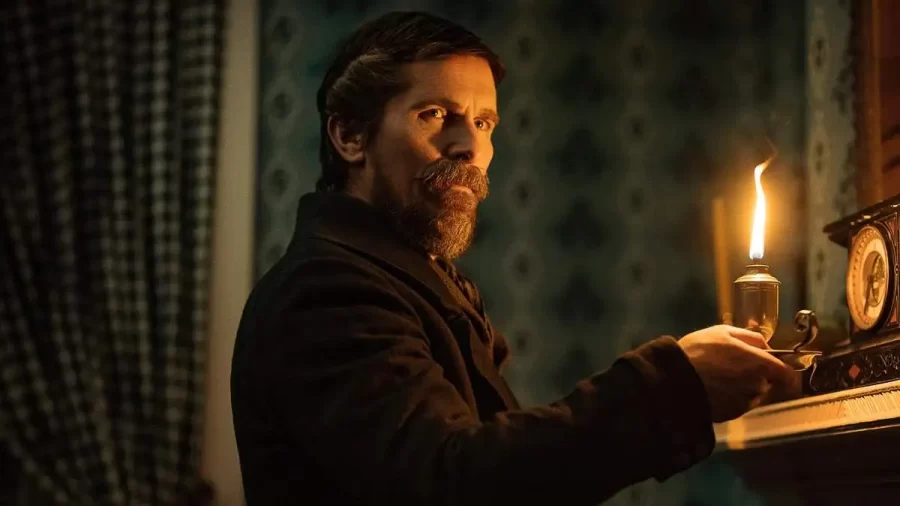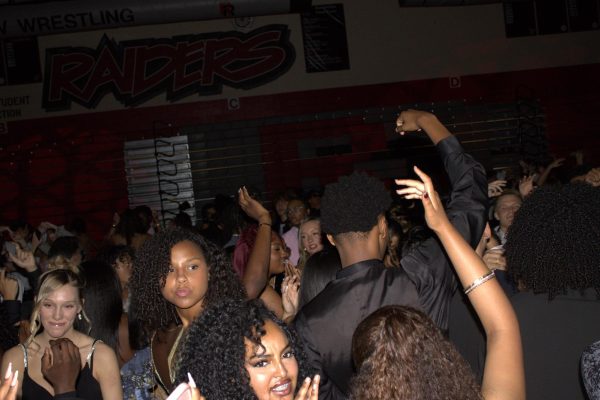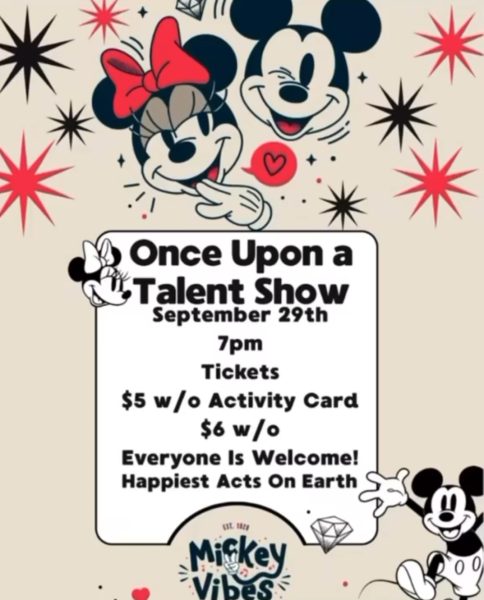The Pale Blue Eye: A Forgettable Meh-ss
January 24, 2023
The Pale Blue Eye is Netflix’s newest big budget showcase. Directed by Scott Cooper, the film was released on December 23, 2022. The film stood for a week in the number one spot of Netflix’s Top Ten Movies, likely because of how promising it seemed to be. Although this end of year movie featured an auspicious cast and crew, as well as a very intriguing trailer, The Pale Blue Eye proved to be more of a bedtime story than any thriller.
The Pale Blue Eye is 2022’s final “Whodunit” movie. A murder mystery that follows the somewhat retired detective Augustus Landor, played by Christian Bale, and his investigation into the desecration into a young cadet’s corpse. The film takes place in the 1830s New York winter at a police academy. This setting takes advantage of Edgar Allen Poe’s real time in the military. Although following the influential Edgar Allen Poe, played by Harry Melling, and using the classic “everyone is a suspect”, The Pale Blue Eye takes well over an hour to progress any of the story. Shown by Landor finding clues that hardly make sense and coming to very rushed conclusions.
This lackluster and somewhat boring storyline is dragged over two hours, taking multiple acts to fully shine. The first and second act are beyond slow, focusing mainly on strewn out character development that has little to no impact. Within a matter of 30 minutes the film shows Poe, an outcast who was disliked by both men and women and essentially bullied by his colleagues; to suddenly drink with them; in a secret hangout and falling in love with a woman after seeing her for the first time. Development like this feels rushed and lacks overall importance with many of these developments having no real impact on the film.
The film also lacks a sense of time. Every scene is either shot in broad daylight or dead of night, with the scenes intertwined to feel as if they happen only days or minutes apart when in reality over a month has passed. This strangely paced development feels both rushed and slow at the same time, making it hard for anyone to be invested in the film as even the most suspenseful moments felt boring and lacked any consequence.
The Pale Blue Eye shines the most in the third and final act. The murderer is finally revealed to the viewer and a glimpse into who Landor’s character is both as a man and as a detective is shown. But with all peaks comes a dramatic fall and The Pale Blue Eye is no exception. Even with an incredible ending and villain, the third act is held back by its lack of plot drive and an unnecessary exposition dump that is pulled out of nowhere.
Throughout the entirety of the film, Landor proves to be the only redeemable character, with some semblance of a backstory giving purpose to his actions. Other characters in the film are strewn together with hardly any depth. The most disappointing display of this comes from Edgar Allan Poe, a character the trailer and synopsis made seem important and intriguing, but the film itself proved him to be quite the opposite. Using the real Edgar Allan Poe’s four years in the army in the late 1820s as a justification for his presence in the film. He seems to have only been thrown into the story as a familiar name to entice potential watchers. As a character, Poe is mediocre at best, and Henry Melling’s portrayal of the iconic poet makes him out to be a goofy, book obsessed, sidekick to Christian Bale’s Landor.
Melling portrays the New England born poet with a heavy Southern accent, making for a very questionable acting choice. All the characters in the film are very dry and bland, with the exception of Landor, which is greatly disappointing, as the story itself does not redeem the lack of depth in the characters. Furthermore, the motives of the characters are only revealed at the end of the movie, making everything leading up to the big reveal very convoluted in terms of character development.
Almost all side characters, including Poe are of little to no importance, bringing almost nothing to the story until the very end. Here it is revealed that many of these dull characters have been conspiring with one another the whole time. With such an interesting concept in terms of a story and characters, the film turned out to be hugely disappointing, in the sense that they hardly touched on aspects of the plot that made things genuinely interesting.
All else aside, The Pale Blue Eye is rightfully praised for its incredible cinematography and soundtrack. Although the film takes place during the winter in a sparsely populated town, cinematographer Masanobu Takayanagi made every scenic shot appear immensely beautiful and aesthetically pleasing. The usage of color provides more insight into the story and characters; with the blue uniforms of the cadets piercing the white and black scheme of the winter woods, signifying how the cadets are not one in the same as their surroundings, rather seeing themselves as more that need to be noticed.
This color difference is further seen in Landor and the commonwealth of West Point, New York. Each individual actor wears dark clothes that blend in with the background, showing how they are more attuned with the reality of their surroundings and view themselves as one and the same, rather than something that needs to be seen.
The soundtrack mirrors the cinematography, always perfectly matching the mood of the scene and never being too intense or mild. The soundtrack was written and composed by Howard Shore, the man behind infamous soundtracks like The Lord of the Rings and The Hobbit trilogies. The entire soundtrack is purely instrumental and in many ways mimics the music of the time, being played on classical instruments that you’d find an orchestra using rather than anything electric.
All in all The Pale Blue Eye was a huge letdown. Aside from the few bits and pieces that made the film amazing such as casting choices, soundtrack, and cinematography the movie was a slow and boring mess. A film with the intention of keeping the audience on the edge of their seats, it proved better in putting the viewer to sleep than giving a thrilling mystery experience. Even the best parts are plagued by the slow and lackluster plot line. The Pale Blue Eye gets a solid 5.5/10 for a rating. Although the movie is easily forgettable, it does have those few aspects that push it above average.













